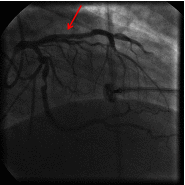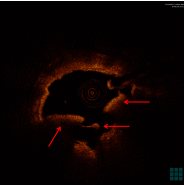Pharmaco-mechanic antithrombotic strategies to reperfusion of the infarct-related artery in patients with ST-elevation acute myocardial infarctions
- PMID: 23408112
- PMCID: PMC3650237
- DOI: 10.1007/s12265-013-9448-1
Pharmaco-mechanic antithrombotic strategies to reperfusion of the infarct-related artery in patients with ST-elevation acute myocardial infarctions
Abstract
Primary percutaneous coronary intervention is the best treatment of patients with ST elevation myocardial infarction (STEMI). When managing a STEMI patient, our approach must be rapid and aggresive in order to interrupt the pathological process of thrombus formation and stabilization. The therapy must be initiated prior to angiography (pretreatment), continued during the procedure (periprocedural), recovery phase (in-hospital), and follow-up. The treatment strategies resulting in thrombus dissolution/extraction have focused on optimization of both pharmacological and interventional therapies. At present, there is no optimal evidence-based approach to all patients with STEMI, and the treatment of these patients needs to be modified with respect to the risk profile, availability of medical resources, and our experience. In this review, we summarize current pharmacological and interventional strategies used in the setting of STEMI and discuss potential benefits of novel dosing regimens and combinations of drugs and techniques.
Figures







Similar articles
-
Delayed versus immediate stenting for the treatment of ST-elevation acute myocardial infarction with a high thrombus burden.Coron Artery Dis. 2012 Nov;23(7):497-506. doi: 10.1097/MCA.0b013e328358a5ad. Coron Artery Dis. 2012. PMID: 22968214
-
Usefulness of local delivery of thrombolytics before thrombectomy in patients with ST-segment elevation myocardial infarction undergoing primary percutaneous coronary intervention (the delivery of thrombolytics before thrombectomy in patients with ST-segment elevation myocardial infarction undergoing primary percutaneous coronary intervention [DISSOLUTION] randomized trial).Am J Cardiol. 2013 Sep 1;112(5):630-5. doi: 10.1016/j.amjcard.2013.04.036. Epub 2013 May 24. Am J Cardiol. 2013. PMID: 23711809 Clinical Trial.
-
Reperfusion strategies in ST-segment elevation myocardial infarction.Minerva Med. 2013 Aug;104(4):391-411. Minerva Med. 2013. PMID: 24008602 Review.
-
[Evidence-based management of ST-segment elevation myocardial infarction (STEMI). Latest guidelines of the European Society of Cardiology (ESC) 2010].Herz. 2010 Dec;35(8):558-64. doi: 10.1007/s00059-010-3401-8. Herz. 2010. PMID: 21107514 German.
-
Evolving antithrombotic treatment strategies for acute ST-elevation myocardial infarction.Rev Cardiovasc Med. 2006;7 Suppl 4:S29-37. Rev Cardiovasc Med. 2006. PMID: 17224888 Review.
Cited by
-
Prognostic impact of neutrophil gelatinase-associated lipocalin and B-type natriuretic in patients with ST-elevation myocardial infarction treated by primary PCI: a prospective observational cohort study.BMJ Open. 2015 Oct 5;5(10):e006872. doi: 10.1136/bmjopen-2014-006872. BMJ Open. 2015. PMID: 26438132 Free PMC article.
-
Prognosis of primary percutaneous coronary intervention in elderly patients with ST-elevation myocardial infarction.J Saudi Heart Assoc. 2015 Apr;27(2):85-90. doi: 10.1016/j.jsha.2014.12.002. Epub 2014 Dec 18. J Saudi Heart Assoc. 2015. PMID: 25870501 Free PMC article.
-
European Society of Cardiology ST-segment Elevation Myocardial Infarction Guidelines in Perspective - Focused on Primary Percutaneous Coronary Intervention.Interv Cardiol. 2014 Mar;9(1):7-10. doi: 10.15420/icr.2011.9.1.7. Interv Cardiol. 2014. PMID: 29588770 Free PMC article.
References
-
- Steg P, James SK, Atar D, et al. ESC Guidelines for the management of acute myocardial infarction in patients presenting with ST-segment elevation: The Task Force on the management of ST-segment elevation acute myocardial infarction of the European Society of Cardiology (ESC) European Heart Journal. 2012;33:2569–2619. doi: 10.1093/eurheartj/ehs289. - DOI - PubMed
Publication types
MeSH terms
Substances
LinkOut - more resources
Full Text Sources
Other Literature Sources
Medical

